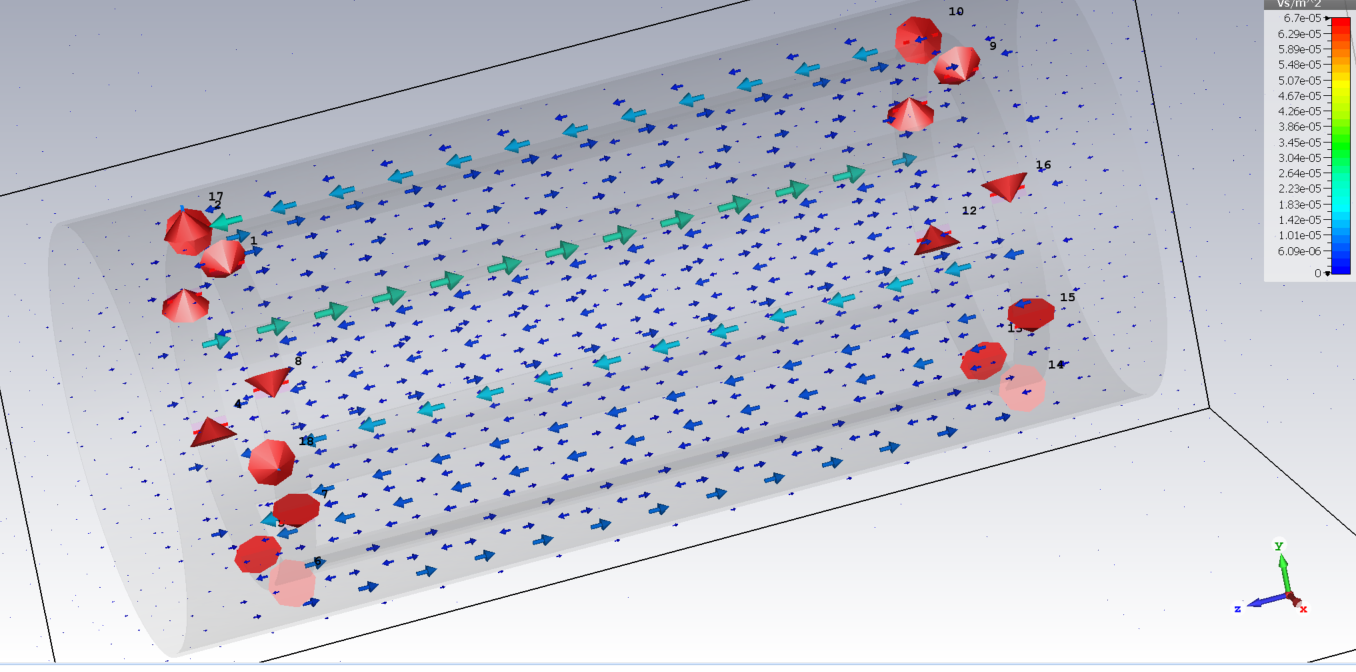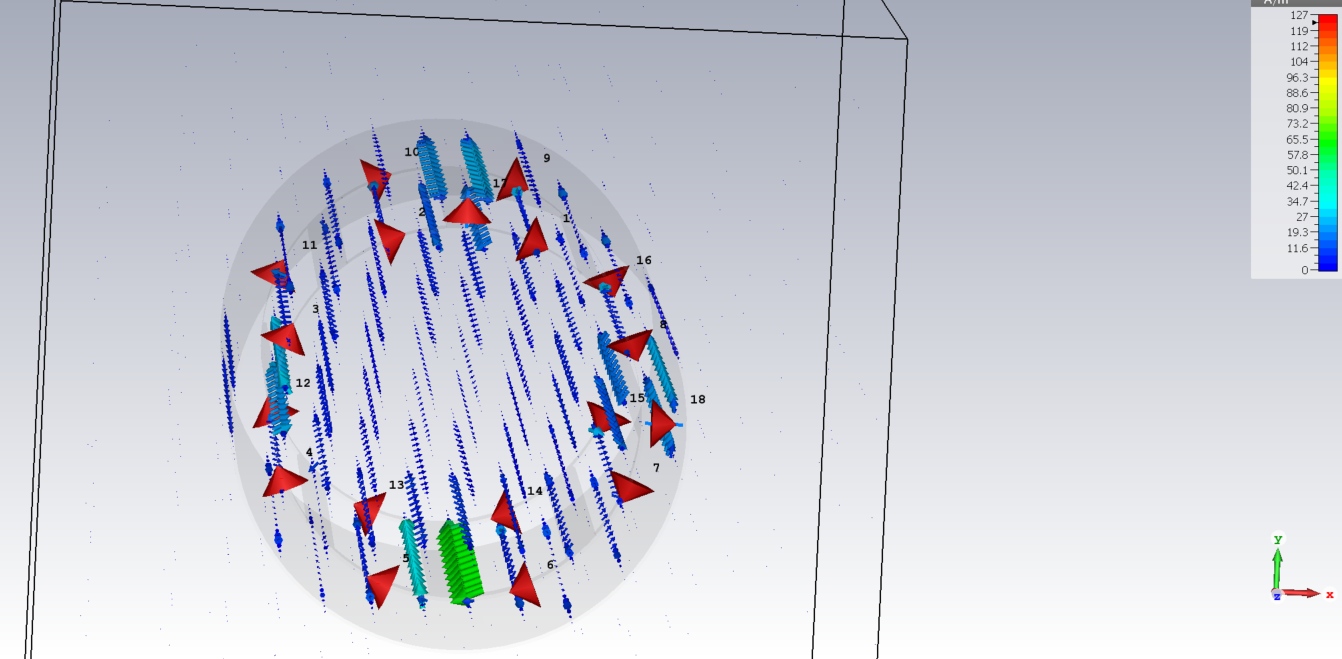What is the difference between H field, B1+ and B1- fields in the CST?
时间:03-29
整理:3721RD
点击:
Hello!
I?m trying to simulate birdcage quadrature RF coil for MRI in the CST MWS 2016. Please help me to understand several issues:
1) What is the difference between H field and B1+ field? I?ve searched for the answer everywhere but I couldn?t find the explanation. When authors use the phrase ?the magnetic field generated by RF coil? in some articles, what do they mean ? H field or B1+ field? Before using the CST, I always thought that any transmit RF coil produces B1+ field which is transmit magnetic field, any receive RF coil receives the B1- magnetic field, and any transceiver RF coil produces transmit B1+ field and receives B1- field.
2) When simulating the birdcage RF coil in the CST, has it sense to claim that I am simulating the transceiver birdcage coil? Or the word ?transceiver? is meaningless when we tell about simulation in CST? For example, I?d like to simulate the quadrature high-pass 8-rung birdcage coil. I placed 16 discrete ports in the gaps on two end-rings between the rungs. I used them for capacitors. Then I placed 2 additional discrete ports on one end-ring between the coil and RF shield. These 2 ports are used for matching, tuning and for excitation. In the ?schematic? tab in CST, I connected two external ports (yellow squares) to the 2 discrete ports mentioned above. So these external ports are stimulating ports, i.e. for the excitation. Returning to the beginning of the question, I?d like to understand ? can I say that these 2 external ports are also the receivers for the electric signal? Will it be correct?
3) The arrows of B1+ and B1- fields simulated in CST using the ?Template Based Post Processing -> MRI Toolbox? are directed along the rungs of birdcage coil, i.e. the B1+ and B1- vectors have the same direction as surface current! How can it be? It is known that vectors of B1+ and B1- fields are directed perpendicularly with respect to the vector of B0 field (constant magnetic field directed along Z axis). At the same time, the arrows of H field in CST are directed perpendicularly with respect to rungs, i.e. perpendicularly with respect to the vector of B0 field.
I've attached the printscreens of H field, surface current, B1+ field and B1- field. I assume that B0 field is directed onto the positive direction of Z axis.
Kind regards,
Elnur
I?m trying to simulate birdcage quadrature RF coil for MRI in the CST MWS 2016. Please help me to understand several issues:
1) What is the difference between H field and B1+ field? I?ve searched for the answer everywhere but I couldn?t find the explanation. When authors use the phrase ?the magnetic field generated by RF coil? in some articles, what do they mean ? H field or B1+ field? Before using the CST, I always thought that any transmit RF coil produces B1+ field which is transmit magnetic field, any receive RF coil receives the B1- magnetic field, and any transceiver RF coil produces transmit B1+ field and receives B1- field.
2) When simulating the birdcage RF coil in the CST, has it sense to claim that I am simulating the transceiver birdcage coil? Or the word ?transceiver? is meaningless when we tell about simulation in CST? For example, I?d like to simulate the quadrature high-pass 8-rung birdcage coil. I placed 16 discrete ports in the gaps on two end-rings between the rungs. I used them for capacitors. Then I placed 2 additional discrete ports on one end-ring between the coil and RF shield. These 2 ports are used for matching, tuning and for excitation. In the ?schematic? tab in CST, I connected two external ports (yellow squares) to the 2 discrete ports mentioned above. So these external ports are stimulating ports, i.e. for the excitation. Returning to the beginning of the question, I?d like to understand ? can I say that these 2 external ports are also the receivers for the electric signal? Will it be correct?
3) The arrows of B1+ and B1- fields simulated in CST using the ?Template Based Post Processing -> MRI Toolbox? are directed along the rungs of birdcage coil, i.e. the B1+ and B1- vectors have the same direction as surface current! How can it be? It is known that vectors of B1+ and B1- fields are directed perpendicularly with respect to the vector of B0 field (constant magnetic field directed along Z axis). At the same time, the arrows of H field in CST are directed perpendicularly with respect to rungs, i.e. perpendicularly with respect to the vector of B0 field.
I've attached the printscreens of H field, surface current, B1+ field and B1- field. I assume that B0 field is directed onto the positive direction of Z axis.
Kind regards,
Elnur




Just to give some kind of reply... I notice you mention magnetism and electromagnetism. We know they are related but from what I understand they are not the same phenomenon. They have similarities to each other and they have differences. One has to do with magnetic fields and ferromagnetic materials, while the other has to do with photons which are able to travel for long distances. I don't know whether a formula used for magnetism would necessarily work on electromagnetism.
